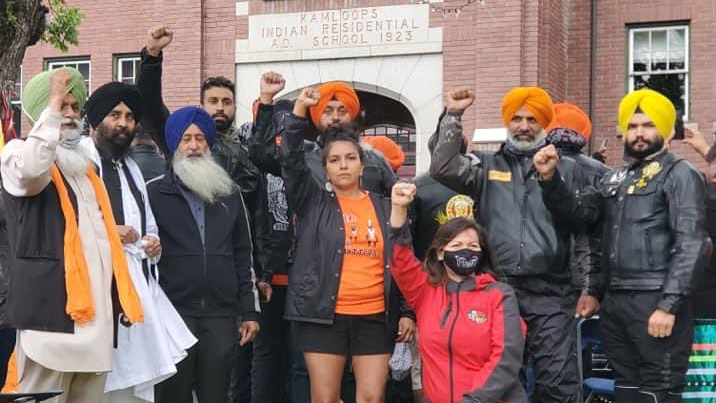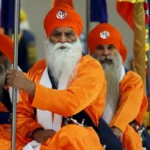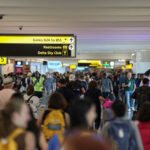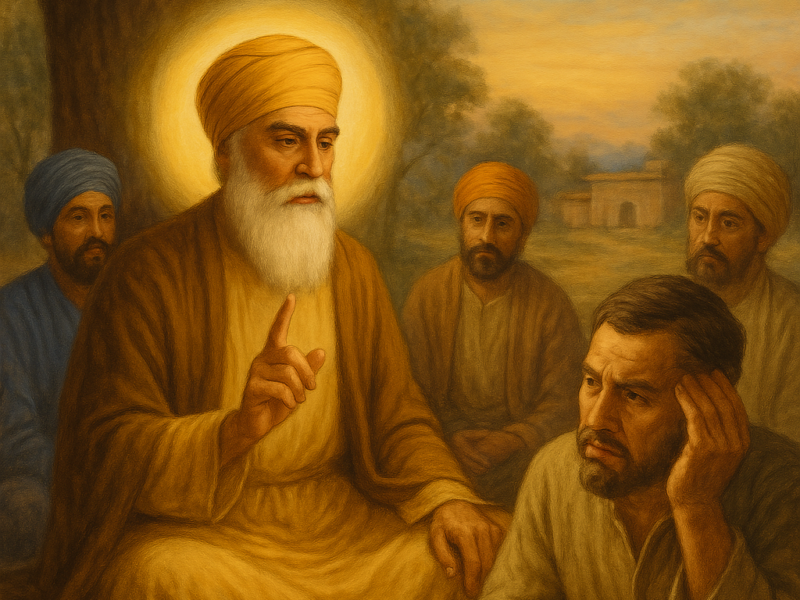The Canadian Sikhs account for about 500,000 people and account for about 1.4% of the population of Canada. Canadian Sikhs are often revered for paving the way for the creation of Sikhism in the United States. Sikhism is a worldwide religion with 27 million followers worldwide, most of whom live in the Punjab, India. The Ontario Legislative Assembly and all other provinces in Canada celebrate April as Sikh Heritage Month.
The largest number of Sikhs in Canada are found in British Columbia, followed by Ontario and then Alberta. [6] However, Sikhs can be found in all provinces and territories within the country. As of the 2011 census, more than half of Canadian Sikhs can be found in one of four cities: Surrey (105,000), Brampton (97,800), Calgary (28,600), and Abbotsford (26,000). British Columbia has the distinction of being the end of the province and one of the few places outside of South Asia with Sikhism as the second most widely practiced religion among the people.
Population
According to the 2011 National Housing Survey, the number of Sikhs living in each province and area of Canada is as shown in the following table. Unlike in India, Sikhs form a large religious group among South Asian immigrants to Canada. In India, Sikhs make up 1.72% of the population, while Hindus form the largest religious group of nearly 79.8%. Among the Indo-Canadian people, religious views are equally divided and Sikhs represent 28% and Hindus 28%.
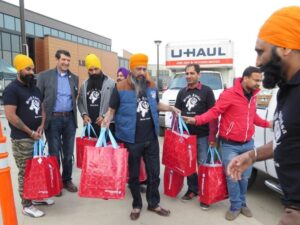
The Sikh settlement in the Queensborough area of New Westminster, 1931.
Outstanding Sikh neighborhoods are located in many of Canada’s major cities, and the suburbs.
British Columbia is home not only to a large number of Sikhs in the country but also to some of the longest-established Sikh communities. Although Sikhs are found in many towns and cities within the province – most focus on the Lower Mainland. In the city of Vancouver, Sikhs make up more than 30% of the Sunset area, and the traditional Punjabi Market is the center of the Vancouver Sikh community. In the Vancouver suburbs of Surrey, Sikhs make up the majority of the neighborhoods of Newton and Whleyley. Surrey Sikhs can be found in large numbers throughout the city, except in South Surrey. Sikhs in New Westminster can be found in the Queensborough area, where they make up more than 30% of the population and have been living since 1919. The western side of Abbotsford likewise has a large Sikh community, making up more than 60% of the population in other parts of Clearbrook and the Townline Hill areas. Similar to New Westminster, the establishment of the Abbotsford Sikh community dates back generations to 1905. The southern part of Oliver, BC, a small town located in the Okanagan Valley, also has a Sikh population of more than 40%.
Sikh communities are found in many towns and villages in Southern Ontario, while a few are found living north of Barrie. The Greater Toronto Area is home to the second largest Sikh community in Canada, behind the Vancouver-Abbotsford area in British Columbia. Toronto Sikhs traditionally reside in the Rexdale area of Etobicoke, and Armadale in Scarborough. The old-established Sikh community can be found in Malton, Mississauga as well, where Sikhs make up about 25% of the population. More than half of Ontario Sikhs can be found in Brampton, making up 19 percent of the city’s population. Although Sikhs are found to live in all parts of Brampton, they make up more than 35% of the population in the Churchville, Springdale, and Castlemore areas.
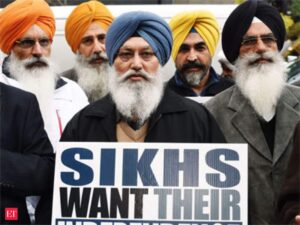
In Alberta, most Sikhs in the province live in Calgary or Edmonton. Although many are first- or second-generation immigrants, Sikhs have lived in Calgary since at least 1908. Most Sikhs in Calgary are centered in the northeastern part of the city. Sikhs make up more than 20% of the population in other parts of Northeast Calgary, especially Martindale, Taradale, Coral Springs, and Saddle Ridge. Most Edmonton Sikhs can be found in the Southeast part of the city, especially in The Meadows, and the Mill Woods. In the area of The Meadows in Edmonton, Sikhs make up more than 30% of the people of Silver Berry.
The New Age
2013 was a year of remembrance for Sikhs as April of that year was declared Sikh Heritage Month by the Government of Ontario. [66] In 2014, a milestone was made when a Calgary park was named after Harnam Singh Hari, the first Sikh settler to successfully plant in the fertile land of Alberta. This came shortly after the announcement of the Quebec Code of Ethics, which threatened the use of religious objects in government workplaces. The Charter was opposed by Sikhs, Hindus, Jews, Christians, and Muslims whose symbols would be affected by this law. In May 2014, Lieutenant Colonel Harjit Sajjan became the first Sikh to command the Canadian army, ironically it was the British Columbia Regiment (Duke Connaught’s Own), who had opposed Komagata Maru a century earlier. In 2015, the Surrey Nagar Kirtan has declared the largest parade of its kind outside of India. In August 2015, Corporal Tej Singh Aujla of the 39th Brigade Group, the Royal Westminster Regiment, became the first Sikh soldier to guard and guard the “Unknown Soldier’s Tomb” at the Canadian National War Memorial. In the run-up to the 2015 Canadian elections, it was noted worldwide that more than a dozen Sikh politicians rode alone, the highlight of the successful reunification of the Sikh community as Canadian citizens. It was also noted that among these politicians, Martin Singh was a Caucasian who converted to Sikhism and may have been the first “white” Sikh to run in a state election.
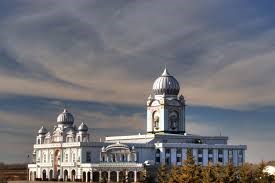
In the 2015 Canadian elections, 20 Sikh MPs were elected, the largest of which was. Of these, four Sikh MPs became part of the Canadian Cabinet under Prime Minister Justin Trudeau. This is the first time that the Canadian Cabinet has more Sikhs as ministers than the Indian Cabinet. This distinction was approved by Trudeau in March 2016. Of these Members of Parliament, Bardish Chagger eventually became the first Sikh woman to hold a position in the Cabinet of the Prime Minister. Also, Member of Parliament Lt. Col. (seated) Harjit Singh Sajjan became the first Amritdhari Sikh to hold the position of Cabinet from the Sikh state as Minister of National Defense. That same year, Punjabi became the third most widely spoken language in the Canadian Parliament. At the same time, many Canadian Sikhs have joined forces with protests against Sikhs in India following the recognition of Gugu Granth Sahib. Many Sikh organizations in Canada held discussions on how to deal with the situation in Canada. Many Canadian Sikh youths have taken to Twitter to protest against the hashtag #SikhLivesMatter.
On April 11, 2016, Prime Minister Justin Trudeau announced that a formal apology for the Komagata Maru incident would be made 102 years later.
On October 1, 2017, Jagmeet Singh, was elected as the leader of the New Democratic Party in the first general election of the party leaders of 2017. In his election, Singh became the first Sikh and the first person in a small visible party to be elected leader of the Canadian political party. Earlier, Singh also played a key role in becoming the first Sikh wearing a hat to sit as Ontario provincial legislator.
